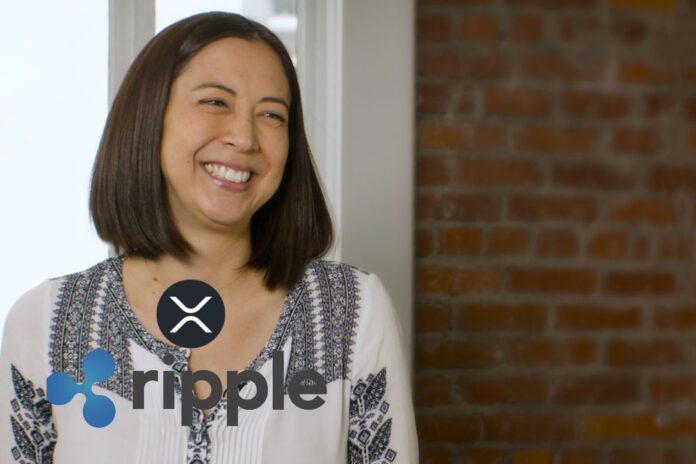In a recent conversation with CoinDesk Japan, Monica Long, the President of Ripple, shared insights into the company’s latest developments. These include Ripple’s legal battle with the U.S. Securities and Exchange Commission (SEC), the upcoming release of the RLUSD stablecoin, and key advancements related to the XRP Ledger (XRPL).
SEC Lawsuit Offers New Clarity for Ripple and XRP
Ripple’s legal case against the SEC, initiated in late 2020, concluded in August. The court’s decision, delivered by Judge Analisa Torres, required Ripple to pay a $125 million penalty—a significantly lower sum than the $2 billion originally sought by the SEC. Importantly, the court ruled that XRP is not considered a security, providing regulatory clarity for the company and the digital asset.
The lawsuit substantially impacts Ripple’s operations, particularly within the United States. Both Ripple CEO Brad Garlinghouse and President Monica Long had previously remarked that the challenging regulatory environment prompted the company to expand internationally.
According to Long, “Even prior to the SEC lawsuit, the majority of our growth was achieved outside the US. In fact, 40% of our activity was in Asia, with most of our payment services customers coming from the Asia-Pacific region.”
She further highlighted that the court ruling has facilitated greater accessibility for Ripple’s products in the U.S., though international markets remain critical to the company’s strategy.
Despite the case’s resolution, there is speculation that the SEC may appeal the decision, particularly regarding secondary market sales of XRP. Attorneys familiar with the case, such as Marc Fagel and James Farrell, suggest that the SEC could file an appeal by October 7, with some pro-crypto lawyers believing an appeal is likely.
Upcoming RLUSD Stablecoin Launch
One of the key initiatives Ripple is focusing on is the launch of its RLUSD stablecoin, which is expected to debut later this year. Long noted that the only remaining hurdle for the release is approval from the U.S. regulator.
Once the RLUSD stablecoin is launched, it will primarily be used for settlement purposes. Developers utilizing the XRPL blockchain will have the option to use RLUSD in their transactions.
Long emphasized that RLUSD would not diminish XRP’s role in Ripple’s broader ecosystem. “We believe stablecoins and XRP have different use cases for payments and other transactions,” Long explained. “For example, DEXs on XRPL will be able to use RippleUSD very efficiently, while XRP will continue to be used for transactions with long-tail, smaller market cap crypto assets.”
The RLUSD stablecoin will be fully backed by U.S. dollars, short-term U.S. Treasury bills, and other liquid assets held in reserve. To ensure transparency, the composition of these assets will be regularly disclosed, and periodic certifications will be issued. This approach is designed to maintain confidence in RLUSD’s liquidity and ensure that the U.S. dollar fully backs the stablecoin.
We are on twitter, follow us to connect with us :- @TimesTabloid1
— TimesTabloid (@TimesTabloid1) July 15, 2023
XRP Ledger: Building for the Future
Ripple’s XRP Ledger (XRPL), launched in 2012, remains a cornerstone of the company’s technological foundation. As a secure and scalable blockchain, XRPL has processed more than 90 million transactions to date and offers a range of enterprise-grade features, including Automated Market Makers (AMM), Decentralized Exchanges (DEX), and compliance tools like Know Your Customer (KYC) protocols.
Monica Long highlighted Ripple’s growing presence in the Japanese market, where the company has established a longstanding partnership with SBI Group. One notable project is the EXPO2025 Digital Wallet NFT, also known as Myakoon!, which will be deployed during the 2025 Osaka-Kansai Expo using XRPL technology. Long noted that Japan remains an essential market for Ripple’s corporate use cases and digital payment solutions.
In addition, SBI Remit, a subsidiary of SBI Group, has been offering international remittance services since 2017. The service uses XRP as a bridge currency to provide fast and cost-efficient cross-border transactions, underscoring the continuing relevance of the digital asset in Ripple’s product suite.
As Ripple looks to the future, its plans for the XRP Ledger, stablecoin innovations, and continued global expansion underscore the company’s effort to push the boundaries of blockchain technology and digital payments.
Disclaimer: This content is meant to inform and should not be considered financial advice. The views expressed in this article may include the author’s personal opinions and do not represent Times Tabloid’s opinion. Readers are urged to do in-depth research before making any investment decisions. Any action taken by the reader is strictly at their own risk. Times Tabloid is not responsible for any financial losses.
Follow us on Twitter, Facebook, Telegram, and Google News


